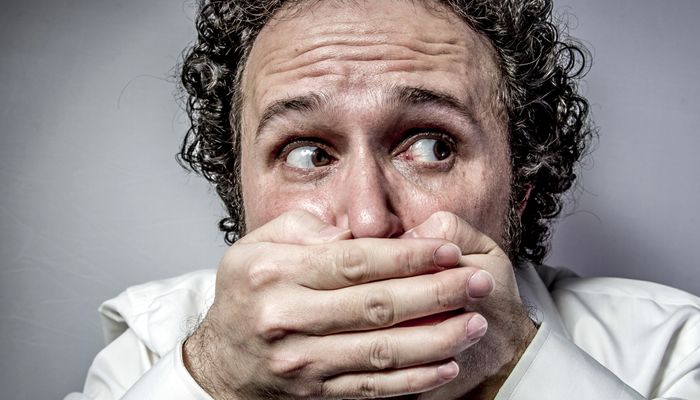Last month, Apple announced a new app designed for its Apple Watch called Breathe, which is designed to "encourage users to take a moment in their day to do deep breathing exercises for relaxation and stress reduction."
According to Jay Blahnik, Apple’s Director of Fitness and Health technologies, the exhale part of an ideal breathing process - seven full breaths per minute - should be one to one and a half times as long as the inhale part.
In 2002 I published a short book, “ Breath of Life or Kiss of Death? Your Voice and Your Presentation” (Capriccio Press) in which I suggested that the exhale part of the consciously-induced process should actually precede the inhale part.
So, to help you all unwind easily and as fast as possible (even if without an Apple watch), I quote here the first two pages of the book in the hope that reading them will reveal an easy way of ‘taking the terror out of talking’ - since that is what they and the rest of it’s 104 pages were designed to do.
Breathe Out
You have your material prepared. You have done your homework and practiced well. You are about to begin a presentation. Instead of feeling confident, you quiver inside. Fear grips your limbs and throat and threatens to sabotage all your careful planning.
What’s to be done?
You need an instant fix. …. BREATHE OUT!
Squeeze as much breath out of your body as you possibly can.
Allow new, fresh air to travel deep down into your chest.
Breathe that air out, and as you do so, begin your presentation.
You have just got rid of stale air and replaced it with air full of oxygen. Fresh air is essential for a clear head, a steady nerve and a firm voice.
In future, if you start to feel confused or out of control of your message, or tired, or anxious, take a moment to squeeze out the stale stuff and make room for vital, energising, fresh air.
The adrenalin rush that we all sense when we are about to give a presentation signals to the body that there is an unusual job to be done. It heightens our awareness. But sometimes the rush of adrenaline keys-up our systems too tightly and tunes-up our voices to a point of strangulation. At such times the smooth-as-clockwork presentation we had prepared uncoils in a mass of quivering springs, and the message that was supposed to hit its target like an arrow from a well-strung bow, turns to gobbledygook.
To avoid that happening: BREATHE-OUT FULLY before you speak. Then, consciously LET breath OUT from time to time during your presentation and DELIBERATELY BREATHE-OUT before you deal with questions.
You will then discover that you feel invigorated when the session is over no matter how complex its delivery turned out to be.
Then, when you are driving home, when you are out partying, when you are in front of a screen, or cooking or washing up - even when you are in bed - consciously BREATHE-OUT from time to time, so that the breath that will automatically refill your vacated lungs can be a source of vitality to you for the rest of your life.

